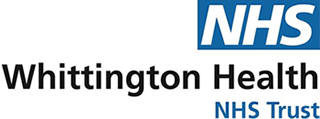Haringey Community Paediatrics: Pathway for children referred with physical disability
Who is this care pathway for?
Who do we see?
How to use this tool
- Who we see?
- Who can refer and how?
- Care Pathway: gives a flow-diagram type overview of the pathway
- Detailed actions: sets out in more detail what is involved in the different parts of pathway
- Associated documents: more for use by professionals
- Resources: these are links to relevant web sites
- Quality standards: this is a list of the quality standards that we report on annually on this web site and these are designated by QS where they appear in the text
Who can refer and how?
Care Pathway

Detailed Actions to be Completed
| Referral Received |
When your child is being referred to this service this should be discussed with you so that you are aware of the reasons for the referral and your consent given Please note:
|
|
Referral Triaged
|
All referrals are triaged by a paediatrician who will:
|
|
Assessment Phase
|
It may take several appointments to complete the holistic paediatric assessment Your child will be seen by a paediatrician who will undertake a holistic assessments that will take in areas of your child's development including motor skills, communication, cognitive abilities, nutrition, vision and hearing, and their medical, family and social history The appointments offered may be:
As part of the assessment the paediatrician will agree a plan for the following with you:
At the end of the assessment if a diagnosis can be confirmed this will be discussed in detail with you as will the management plan and follow up.
|
|
Follow-up to 2 years of age
|
In these appointments with the paediatrician you will have the opportunity to discuss further your child’s diagnosis and outlook, and support you in coming to terms with your child’s difficulties and develop positive outlook. The paediatrician will also:
|
|
Follow-up in
Pre-School years |
In this time your paediatrician will continue to work with you to ensure that your child’s medical and developmental needs are addressed. They will use a standard structured review pro forma to ensure that all of the following issues are covered:
|
|
Follow-up in
School years
|
You will continue to see your paediatrician as before. During this time the reviews will cover the same ground much as for the preschool years – the timing of the follow up appointments will be agreed with you based on the medical issues. Children who attend a special school will be seen in their school where we have a full complement of therapist. Children attending mainstream school will be followed up in clinics in the Child Development Centre – there is the option for review in a multidisciplinary clinic, depending on the complexity of the medical issues.
|
| Discharge or
Transition to
Adult Services
|
When our work is complete then we will discharge your child from follow up. However, there remains the possibility of us seeing you and your child again if problems emerge. For some, your child will remain under therapy services and your therapist can flag up any concerns that you have with the paediatrician at one of our multidisciplinary meetings. Alternately, someone such as your GP can refer you back to be seen again. If your child is under follow up with the Community Paediatric Service coming into their adult years, typically this will be a young person who is in one of the borough’s special schools, then we will participate in the transition process to adult services and make any relevant referrals to adult medical services and/or the Adult disability service.
|
Associated Documents
Resources
| Useful links | |
|
|
This is an NHS website that gives information on Caring for a disabled child that can help in making your daily parenting duties, such as feeding, toilet training.
|
| Markfield |
Markfield is a community centre in Haringey which promotes the dignity, choice, independence and community inclusion of Disabled people and their families.
|
|
|
The London Borough of Haringey Disabled Children's Team (DCT) provides services for children with disabilities and their families.
Their aim is to provide a quality, child-centred service for disabled children and young people (and their families or carers) who live in Haringey. |
| This information is for parents/carers of children with special educational needs and/or disabilities. It explains the support offered in Haringey for those children and young people called the ‘local offer’. | |
|
Disability Living Allowance (DLA) for children may help with the extra costs of looking after a child who:
|
|
|
This is the Haringey Council site for adult learning disability services which also includes information on health services.
|
Quality Standards
| QS-1 |
We will send out our clinic letters within 2 weeks of the appointment
|
| QS-2 |
We welcome, actively seek and act on feedback from all who use our services
|

